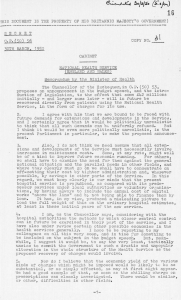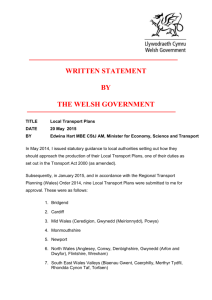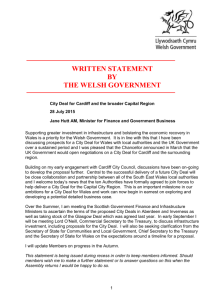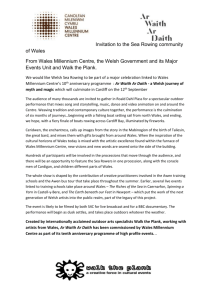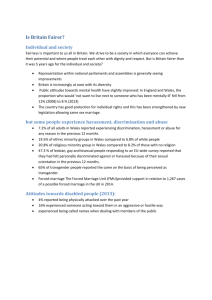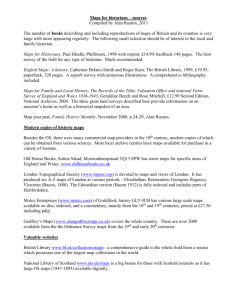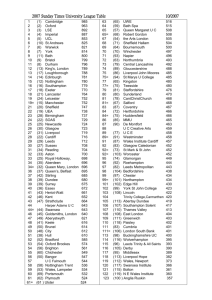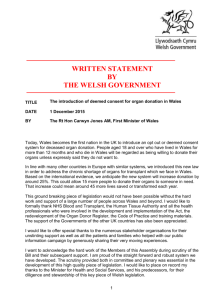Australia New South Wales – Land and Environment Court
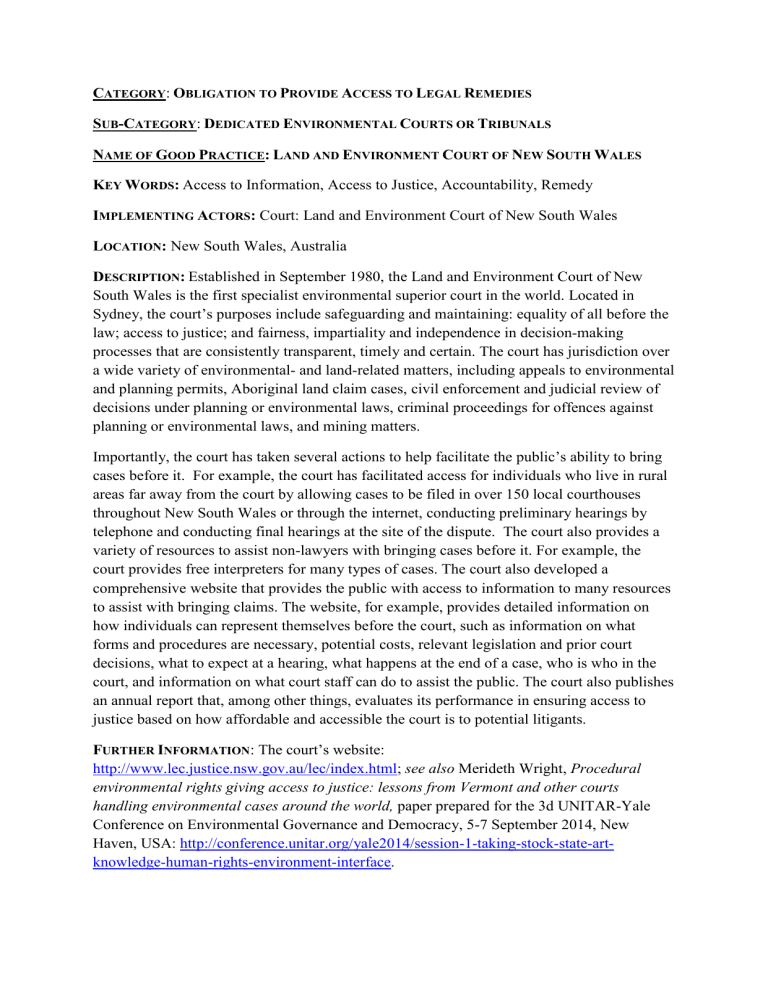
C
ATEGORY
: O
BLIGATION TO
P
ROVIDE
A
CCESS TO
L
EGAL
R
EMEDIES
S
UB
-C
ATEGORY
: D
EDICATED
E
NVIRONMENTAL
C
OURTS OR
T
RIBUNALS
N
AME OF
G
OOD
P
RACTICE
: L
AND AND
E
NVIRONMENT
C
OURT OF
N
EW
S
OUTH
W
ALES
K EY W ORDS : Access to Information, Access to Justice, Accountability, Remedy
I
MPLEMENTING
A
CTORS
: Court: Land and Environment Court of New South Wales
L
OCATION
: New South Wales, Australia
D ESCRIPTION : Established in September 1980, the Land and Environment Court of New
South Wales is the first specialist environmental superior court in the world. Located in
Sydney, the court’s purposes include safeguarding and maintaining: equality of all before the law; access to justice; and fairness, impartiality and independence in decision-making processes that are consistently transparent, timely and certain. The court has jurisdiction over a wide variety of environmental- and land-related matters, including appeals to environmental and planning permits, Aboriginal land claim cases, civil enforcement and judicial review of decisions under planning or environmental laws, criminal proceedings for offences against planning or environmental laws, and mining matters.
Importantly, the court has taken several actions to help facilitate the public’s ability to bring cases before it. For example, the court has facilitated access for individuals who live in rural areas far away from the court by allowing cases to be filed in over 150 local courthouses throughout New South Wales or through the internet, conducting preliminary hearings by telephone and conducting final hearings at the site of the dispute. The court also provides a variety of resources to assist non-lawyers with bringing cases before it. For example, the court provides free interpreters for many types of cases. The court also developed a comprehensive website that provides the public with access to information to many resources to assist with bringing claims. The website, for example, provides detailed information on how individuals can represent themselves before the court, such as information on what forms and procedures are necessary, potential costs, relevant legislation and prior court decisions, what to expect at a hearing, what happens at the end of a case, who is who in the court, and information on what court staff can do to assist the public. The court also publishes an annual report that, among other things, evaluates its performance in ensuring access to justice based on how affordable and accessible the court is to potential litigants.
F
URTHER
I
NFORMATION
: The court’s website: http://www.lec.justice.nsw.gov.au/lec/index.html
; see also Merideth Wright, Procedural environmental rights giving access to justice: lessons from Vermont and other courts handling environmental cases around the world, paper prepared for the 3d UNITAR-Yale
Conference on Environmental Governance and Democracy, 5-7 September 2014, New
Haven, USA: http://conference.unitar.org/yale2014/session-1-taking-stock-state-artknowledge-human-rights-environment-interface .
